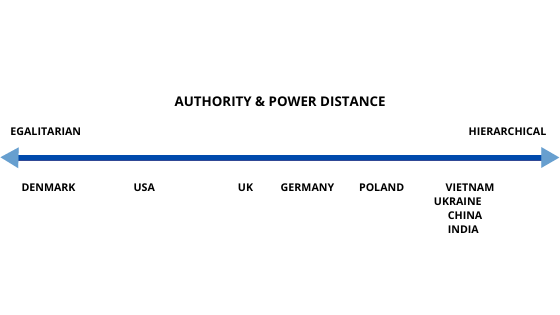Change of cultural context changes the preference for leadership style. Differences in what’s defining outstanding leadership make leading across cultures difficult. Most often you can’t transfer your (succesful) leadership style to another country. So how should power and authority be distributed?
Danish organisations are characterized by a flat hierarchy and a very low power distance. The managing director is one of the guys. Often you can’t tell who is the boss, when entering the office.
Danes call everyone by their first name and and feel free to contact their leader regardless of their organisational level.
Employees are motivated by having responsibility, influence and autonomy. Tell them what to do not how to do.
In lots of places all over the world, the egalitarian leadership style is not a hit. It could be Vietnam, Russia, Korea, or Nigeria. Power is uneqally distributed and leadership hierarchical.
The boss is highly respected and is shown great deference. Communication follows organisational levels. Job descriptions are detailed on how to do. The boss is the one, having the answers.
Employees expect and prefer this leadership style.
These observations are tendencies. Every individual is different. Always remember we don’t deal with cultures, we deal with individuals.
Here you can find Business Culture Miniguides:


